Martian auroras will never best the visual splendor of those we see on Earth, but have no doubt. The Red Planet still has what it takes to throw an auroral bash. Witness the latest news from NASA’s MAVEN atmospheric probe.
In December 2014, it detected widespread auroras across Mars’ northern hemisphere dubbed the “Christmas Lights”. If a similar display happened on Earth, northern lights would have been visible from as far south as Florida.
“It really is amazing,” says Nick Schneider who leads MAVEN’s Imaging Ultraviolet Spectrograph (IUVS) instrument team at the University of Colorado. “Auroras on Mars appear to be more wide ranging than we ever imagined.”
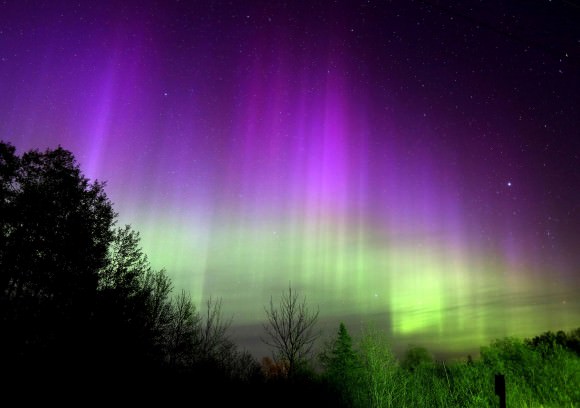
Study the map and you’ll see the purple arcs extend to south of 30° north latitude. So what would Martian auroras look like to the human eye? Would we see an arcade of nested arcs if we faced east or west from 30°N? Well, er, yes, if you could see into the ultraviolet end of the spectrum. Mars’ atmosphere is composed mostly of carbon dioxide, so most of the auroral emissions occur when high speed solar wind particles ionize CO2 molecules and carbon monoxide to produce UV light. Perhaps properly suited-up bees, which can see ultraviolet, would be abuzz at the sight.
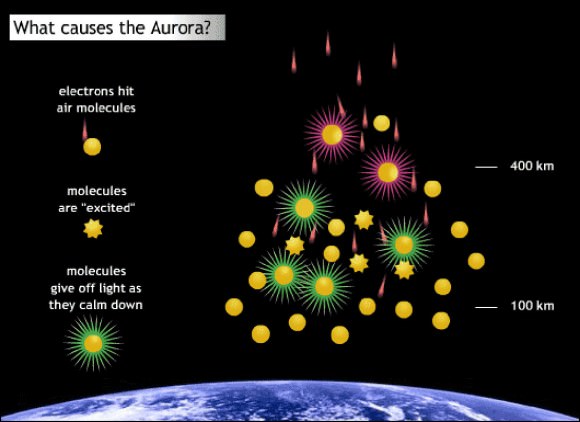
That’s not the end of the story however. Martian air does contain 0.13% oxygen, the element that puts the green and red in Earth’s auroras. The “Christmas Lights” penetrated deeply into Mars’ atmosphere, reaching an altitude of just 62 miles (100 km) above its surface. Here, the air is relatively thicker and richer in oxygen than higher up, so maybe, just maybe Christmas came in green wrapping.
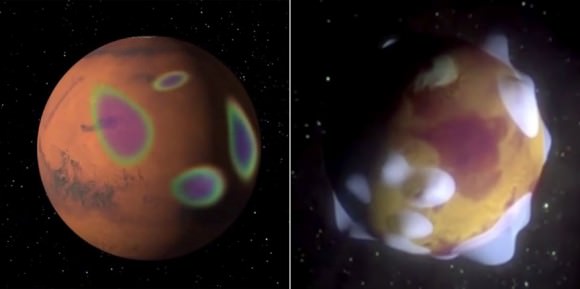
Nick Schneider, who leads MAVEN’s Imaging Ultraviolet Spectrograph (IUVS) instrument team, isn’t certain but thinks it’s possible that a diffuse green glow could appear in Mars’ sky during particularly energetic solar storms.
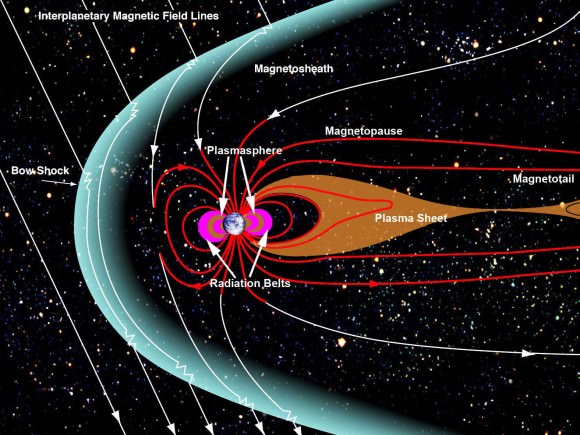
Credits: NASA
While the solar wind produces auroras at both Earth and Mars, they originate in radically different ways. At Earth, we’re ensconced in a protective planet-wide magnetic field. Charged particles from the Sun are guided to the Earth’s poles by following a multi-lane freeway of global magnetic field lines. Mars has no such organized, planet-wide field. Instead, there are many locally magnetic regions. Particles arriving from the Sun go where the magnetism takes them.
“The particles seem to precipitate into the atmosphere anywhere they want,” says Schneider. “Magnetic fields in the solar wind drape across Mars, even into the atmosphere, and the charged particles just follow those field lines down into the atmosphere.”
Maybe one day, NASA or one of the other space agencies will send a lander with a camera that can shoot long time exposures at night. We’ll call it the “Go Green” initiative.

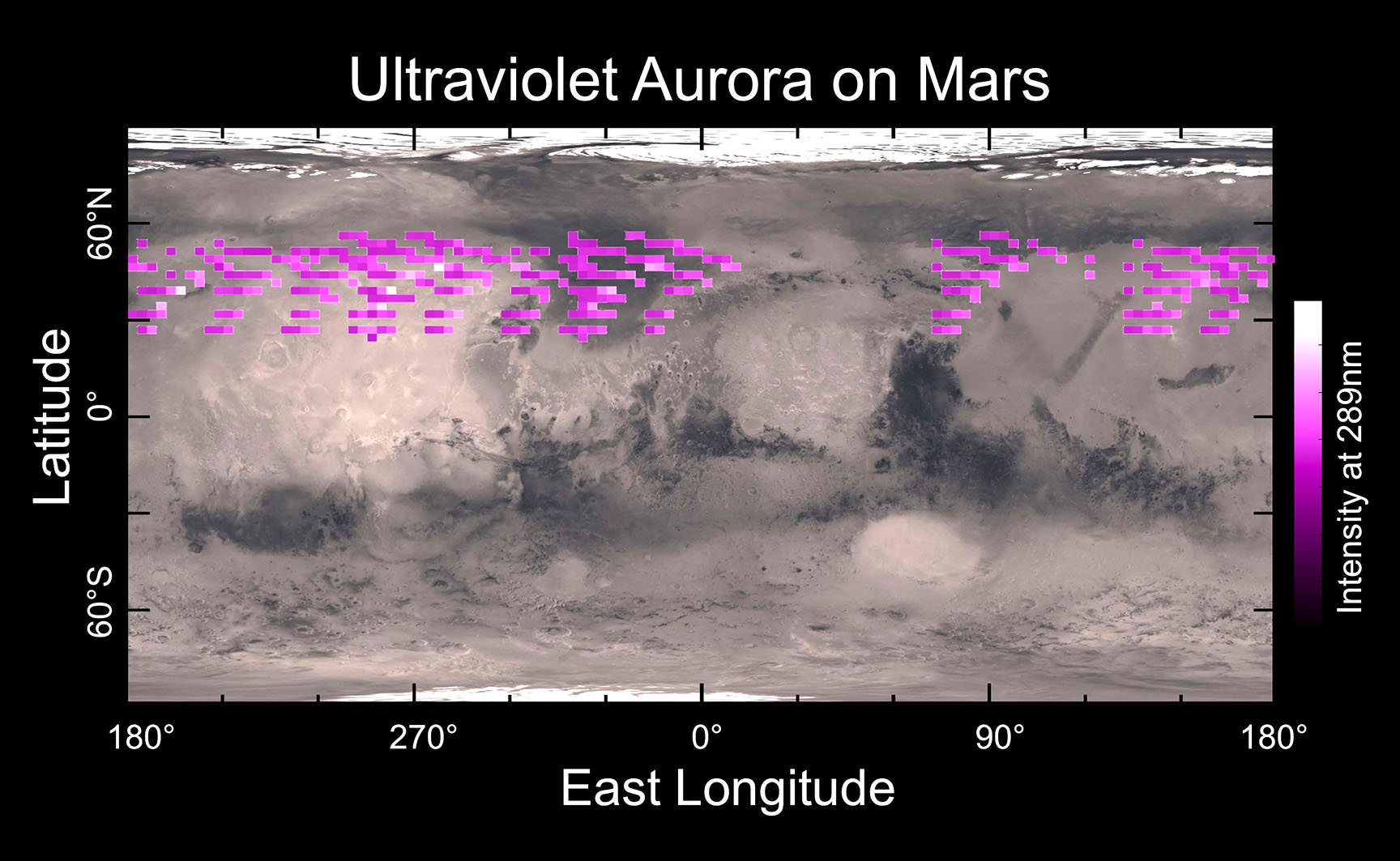
Would the larger magnetic ‘bubbles’ on Mars, as shown in the forth image provide any rad. protection for astronauts on the ground?
Hi Aqua4U,
I should think so, assuming they repeatedly act as mini-magnetospheres. Caves might be a better bet though.
Yes, lava tubes and/or caves would provide protection from incoming meteorites and radiation, but I am thinking how those magnetic field remnants might be artificially enhanced to provide protection from charged particles in a large area. Say large enough to enclose a whole colony? Or at least the geodesic greenhouse domes?
Aqua,
You’re a big picture guy. I like it. Sounds like a technology for the future.
My guess is that they would help a little, but you can’t rely entirely on them for protection.